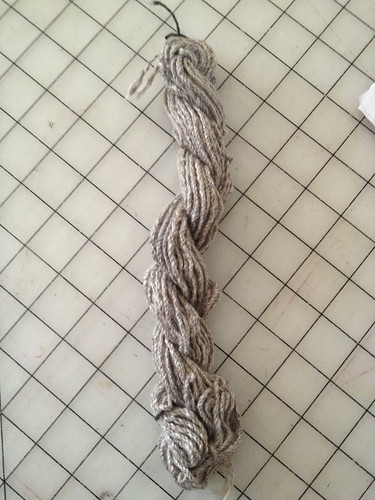I'm trying to catch up on all of my crafty & geek blogging, but have failed miserably. I promise more interesting stuff to come down the pike.
So, week 3 of the SpinU Woolen Intensive has come and gone (expect some rapid fire posts on
this subject soon!) We continued working on spinning from the fold, but transitioning to the tips of the fiber. (Abby Franquemont has a
good explanation of spinning from the fold on her website.)
(Spinning from the Fold / Tips)
Why, you might ask? Because spinning from the fold is a lot easier, but you end up with waste, whereas spinning woolen from the tips is more fiber-efficient. There are those that might argue about whether one method is more truly "woolen" than the other, but as Sandy points out, when you're spinning cashmere @ $10 USD per ounce (~28 grams), you're more worried about using your fiber with as little waste as possible.
In addition to working on this transition, we were working with short staple fibers --- namely, cotton. From the last SpinU,
cotton was my bane. I had such trouble with it.
However, with this SpinU class, it has gotten a LOT better. Cotton & I are still not on great terms, BUT, I can spin a passable form of cotton. And, I found that the
type of cotton grown and the
type of preparation really does make a difference in how well I can spin it. Just like wool, not all cotton is equal and is dependent on a number of factors. Previously, I found punis easier to spin, but this time around, I could spin certain cotton tops easier than others.
For homework, we were to spin a larger single (nearly sport weight) of cotton, which was harder than I had anticipated, but apparently, to be expected. Then ply the singles into a 2-ply.
The result, while not fantastic, wasn't too bad either. In the pre-wash photo, it's a very tight ply, because woolen (unlike worsted spun yarns) don't tend to hold their twist, so overplying becomes necessary.
There's a mantra for spinning woolen that I picked up from Judith MacKenzie (paraphrase) -- spin singles lightly, ply together tightly.
Next up, luxury fibers!

















